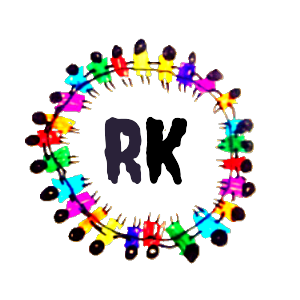Learning JavaScript effectively involves a structured approach that covers basic to advanced concepts. Here’s a comprehensive outline to guide your learning journey:
1. Introduction to JavaScript
- Overview of JavaScript: Learn about JavaScript’s history, its uses, and why it’s essential for web development.
- Setting Up JavaScript: Using a web browser console for simple scripts and setting up a development environment with an editor like VSCode.
2. Basic Syntax and Operations
- Hello, World!: Write your first JavaScript program.
- Basic Syntax: Understand JavaScript’s syntax, semicolons, comments, and basic rules.
- Data Types: Learn about primitive data types (number, string, boolean, null, undefined, symbol) and reference data types (objects, arrays).
- Variables: Declaration using var, let, and const.
- Operators: Arithmetic, assignment, comparison, logical, and ternary operators.
3. Control Structures
- Conditional Statements: if, else if, else, and switch-case.
- Loops: for, while, and do-while loops.
- Control Flow Statements: break, continue, and return.
4. Functions
- Defining Functions: Function declarations, function expressions, and arrow functions.
- Parameters and Arguments: Passing and handling parameters.
- Scope and Closures: Understanding variable scope and closures.
- Higher-Order Functions: Functions that accept other functions as arguments or return functions.
5. Objects and Arrays
- Objects: Creating and manipulating objects, object methods, and the ‘this’ keyword.
- Arrays: Array creation, manipulation, and common methods (push, pop, shift, unshift, map, filter, reduce).
6. String Manipulation
- String Methods: Common string methods like length, indexOf, substring, slice, split, replace, and template literals.
7. DOM Manipulation
- Document Object Model (DOM): Understanding the DOM tree structure.
- Selecting Elements: Using methods like getElementById, getElementsByClassName, querySelector, and querySelectorAll.
- Modifying Elements: Changing element properties, styles, and attributes.
- Event Handling: Adding event listeners and handling events.
8. Browser APIs
- Timers: Using setTimeout and setInterval.
- Fetch API: Making HTTP requests using fetch for AJAX.
- LocalStorage and SessionStorage: Storing and retrieving data locally in the browser.
- Geolocation API: Getting the user’s location.
9. ES6+ Features
- Let and Const: Block-scoped variables.
- Arrow Functions: Shorter syntax for functions.
- Template Literals: String interpolation and multi-line strings.
- Destructuring: Extracting values from arrays and objects.
- Spread and Rest Operators: Expanding and gathering elements.
- Modules: Importing and exporting modules.
- Promises and Async/Await: Asynchronous programming with promises and async/await.
10. Error Handling
- Try-Catch: Handling exceptions with try, catch, and finally.
- Custom Errors: Creating and throwing custom errors.
11. Object-Oriented Programming (OOP)
- Classes: Defining classes and constructors.
- Inheritance: Extending classes and using the super keyword.
- Prototypes: Understanding prototype-based inheritance.
12. Functional Programming
- Pure Functions: Understanding and writing pure functions.
- Immutability: Writing immutable code.
- Higher-Order Functions: Functions that operate on other functions.
13. Asynchronous JavaScript
- Callbacks: Understanding callback functions.
- Promises: Creating and using promises.
- Async/Await: Writing asynchronous code in a synchronous style.
14. Testing and Debugging
- Debugging Tools: Using browser developer tools for debugging.
- Unit Testing: Writing tests using frameworks like Jest or Mocha.
- Linting: Using ESLint to enforce coding standards.
15. Working with APIs
- REST APIs: Consuming REST APIs with fetch or Axios.
- GraphQL: Introduction to GraphQL and basic queries.
16. Frameworks and Libraries
- Introduction to Frameworks: Overview of popular frameworks like React, Angular, and Vue.
- Using Libraries: Working with libraries like jQuery, Lodash, or D3.js.
17. Build Tools and Module Bundlers
- Package Management: Using npm or Yarn for managing packages.
- Module Bundlers: Introduction to Webpack, Parcel, or Rollup.
- Task Runners: Using task runners like Gulp or Grunt.
18. Progressive Web Apps (PWAs)
- Service Workers: Caching and offline functionality.
- Web App Manifest: Creating a web app manifest for PWAs.
19. Deployment
- Hosting: Options for deploying JavaScript applications.
- CI/CD: Basics of Continuous Integration and Continuous Deployment.
20. Best Practices
- Code Readability: Writing clean, readable, and maintainable code.
- Version Control: Using Git for version control and GitHub for collaboration.
- Performance Optimization: Optimizing JavaScript performance.
21. Project-Based Learning
- Build Projects: Start with small projects like a to-do list app, calculator, or weather app.
- Incremental Complexity: Move on to more complex projects like single-page applications (SPAs), chat applications, or e-commerce platforms.
22. Continuous Learning
- Community Engagement: Join JavaScript communities on Stack Overflow, Reddit, or Discord.
- Stay Updated: Follow JavaScript-related blogs, podcasts, and news.
- Advanced Resources: Read advanced books like “You Don’t Know JS” by Kyle Simpson.
By following this outline, you’ll build a solid foundation in JavaScript and progressively advance your skills through practical application and continuous learning.
